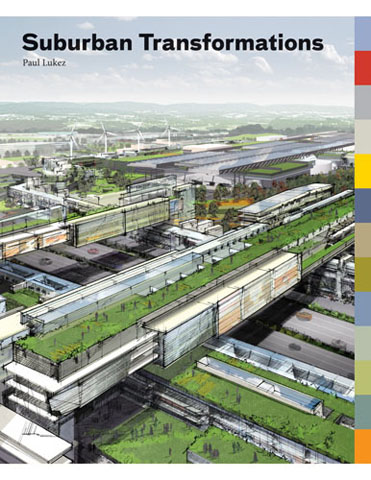Review: Suburban Transformations
 60 years ago, eastern
60 years ago, eastern
I grew up in those suburbs.
During his seven years at MIT as an assistant professor of architectural design, Somerville-based architect Paul Lukez looked at historical mapping of Burlington, MA, to develop the Adaptive Design Process, “a method that allows for the organic transformation of communities with their own distinct identity and unique character,” which he explores in his new book, Suburban Transformations, published by Princeton Architectural Press. Using the Adaptive Design Process, Lukez delves into how our suburbs came to be, what their current state is, and how they can be changed from here.
The information he presents is startling. I’m not going to reprint all of them, but here’s a good one: The Burlington Mall sits on top of
After showing us the good and bad of current suburban development, Lukez presents six scenarios of different ways Burlington’s infrastructure (including the interchange of routes 128 and 3), buildings, and processes can be changed to make it healthier, more sustainable, and a better place to live, not just shop.
Lukez also offers case studies on the Dedham Mall area, the
The thing I like about Lukez’s proposals is that they aren’t anti-growth or anti-development. Rather, Lukez expresses that it is through developing these areas that they will become truly unique destinations.
Suburban Transformations, packed with technical information, will surely become required reading in architecture and urban planning programs. That said, it is light enough that any layperson with an interest in architecture, design, or (sub)urban planning will enjoy it, and get something out of it.

No comments:
Post a Comment